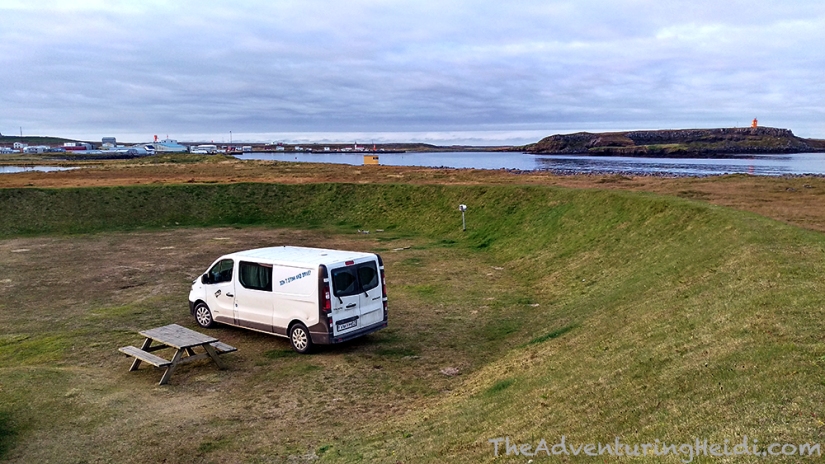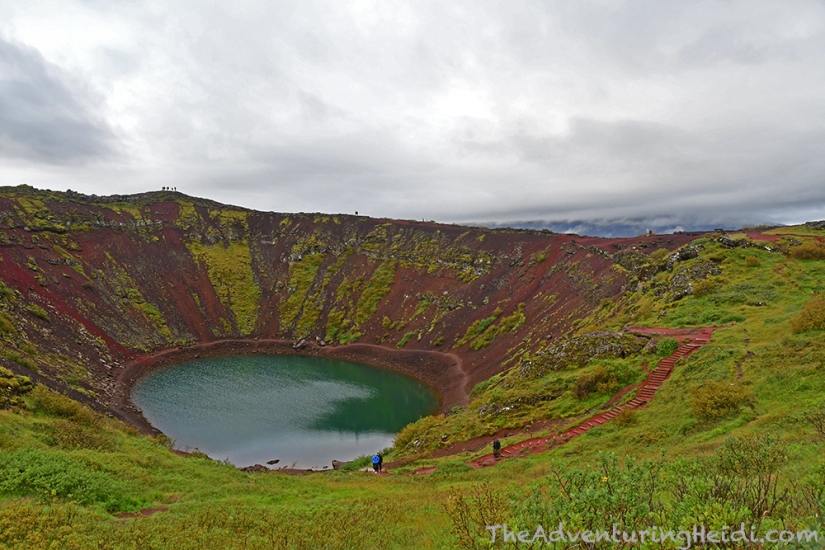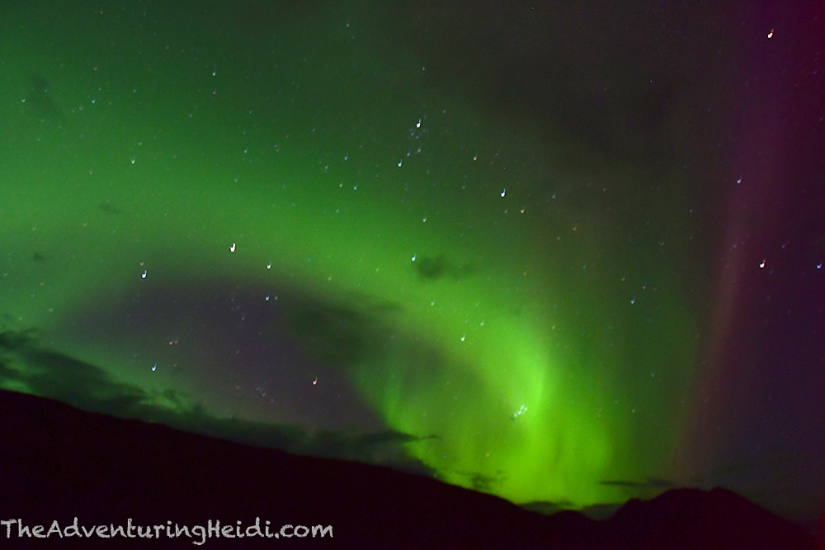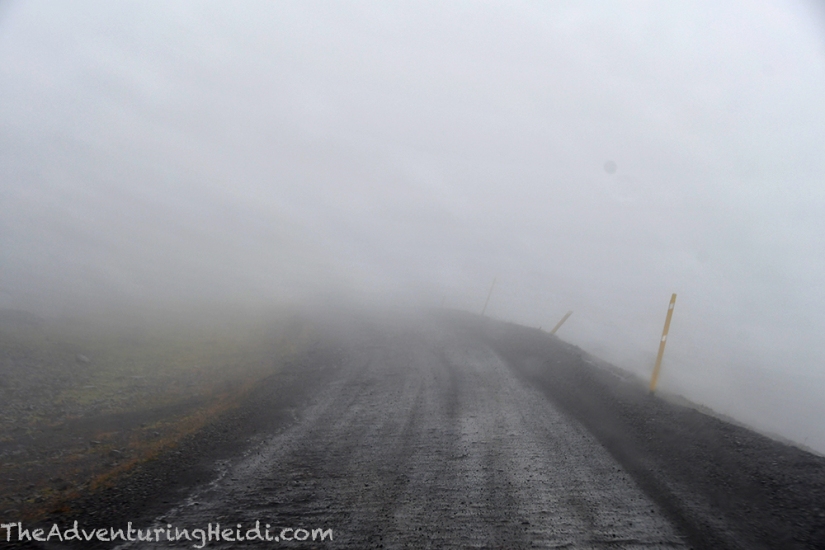Probably one of the most asked questions in travel groups is “When should I go to Iceland?” And like with most subjects, everyone has their opinion… so here’s mine about September!
September in Iceland is often referred to as a “shoulder season,” meaning that the peak of tourists has waned, prices have dropped, but it’s not at lowest. It’s an off season, but not completely off, if that makes sense.
My boyfriend, Kubo, and I spent nineteen days in Iceland between September 1-19, 2018, and never once regretted our choice in time of year to visit. Below I have outlined various aspects to traveling in September from the weather, to road conditions, to what the landscape is like, to special treats like wild bilberry picking.
The Crowds
I’m not sure I would want to see what the South Coast is like in July or August, because even in mid-September there were too many people for my liking! So if you’re anti-social like me, September is a good bet to avoiding the biggest of the big crowds without having to come in the dead of winter! That being said, I really didn’t have issues with getting photos without anybody in the way even on the South Coast. Rain gear helps with this in the case of waterfalls, and hitting other places, like Reynisfjara, early before the tour buses show up helps give you some solitude in the busiest places.

Because I have not visited during other times of year (yet), I can’t compare how other places were. But I felt that Snæfellsnes, Westfjords, the north, and far eastern fjords had either small crowds or no one else at all. We drove some days for hours without seeing a single other car in certain areas!
Weather
We had a bit of everything during our September trip! We saw temperatures from 34F to 60F (about 1C to 15C), with cloud-free sunny days, rainy days, cloudy days, windy days, and some snow all mixed in (and sometimes all of those things within a few hours of each other). Granted, this can be the norm even in the summer in Iceland, so we came prepared to expect it all. Honestly, I was shocked at how we really seemed to hit the weather luck for over half of our trip, especially after the rainy, dreary summer of 2018 Iceland experienced. Obviously as September wears on, the weather can turn colder and colder, and even over our nineteen days we definitely felt that shift from late summer to full on autumn. The changes seem to happen a lot more rapidly when you’re sitting right below the Arctic Circle!
(In fact, for the evening of our departure, a winter storm warning was in effect with warnings that the Ring Road was going to be closed. We saw plenty of locals getting their winter tires installed even! Needless to say, the weather can change quick, and severely, and winter doesn’t always just happen when the calendar says it is winter.)
If planning on any excursions into the highlands, keep in mind that at higher elevations weather can turn worse a lot quicker than you think. And by “highlands” I mean places you can reach by hiking from the Ring Road even. We hiked from Skógafoss about five miles up the Fimmvörðuháls trail, and it started out as a warm, sunny day. We converted our hiking pants into shorts and had short sleeves on. After reaching the bridge over the Skóga river, we turned around and within minutes an insane storm started up, with snow, hail, and heavy rain. We had layers and rain gear with us, so fortunately our five mile return trip back to the parking lot was a warm and dry affair. Therefore, if you’re thinking about hiking in Skaftafell (you climb upon a heath even to reach Svartifoss), up Waterfall Lane on Fimmvörðuháls… just be prepared! Take rain gear, have proper footwear, hat, gloves, and layers, even if it appears sunny. Better safe than sorry, especially as the seasons are changing. Because of our hiking heavy itinerary, I even had one of those emergency foil blankets in my backpack – preparedness is good!
Yes, it rains a lot in Iceland, and September is billed as the rainiest month. We never had a single day of solid rain, and it can come and go. So yes, the forecast you’re seeing is probably accurate. Yes, it can get cold. But yes, you should bring those sandals! Please please please invest in quality rain gear, as it’ll save you from sitting inside when the rain is pouring, and is also great for all those waterfalls!


Prices
As the peak of tourist season winds down, so do prices for many things (though this is changing as more people choose September for their Iceland adventures). Our camper van was significantly discounted since our rental started on September 1st. Expect accommodation prices to also decreased as demand decreases. Rental car prices decrease as companies offer up discounts for off peak season. I can’t speak from experience since I did not utilize any, but I can only guess that guided tours and excursions can also see a price drop. Blue Lagoon has different pricing for off peak times.
I believe in booking airfare in ways in advance and utilizing Hopper to monitor Icelandair prices for me, so I cannot say if season really affects this unless you’re trying to book last minute airfare. Icelandair will have various sales throughout the year, which is a possibility to consider.
Since Iceland can be a pricey destination, these discounts starting in September can definitely make a difference on your wallet and itinerary. There is no way I could’ve afforded a camper van for nineteen days in July or August!
Daylight Hours
In a land of extremes, even the amount of daylight in Iceland can vary from nearly twenty-four hours in early summer to only a handful in the dead of winter. September offered up a happy medium, with daylight lasting 14+ hours at the beginning of the month, and 12 (or a bit less) by the mid-to-end of the month. This allows for long travel days and squeezing in all the adventure you want, but still allowing you to sleep when it’s actually dark outside (no eye masks necessary!). A thing we noticed is that even after sunset, the twilight could stretch for several extra hours, leaving extra light that you weren’t even expecting.
On our trip…
Earliest sunrise: 6:11am – September 2nd – Hveragerði
Latest sunrise: 7:02am – September 19th – Reykjavík
Latest sunset: 8:39pm – September 2nd – Hella
Earliest sunset: 7:26pm – September 15th – Svínafell
(Sunrise/sunset is going to be dependent on where you are. Even though Iceland is not very big, there can be big differences in daylight hours in the north vs. south, and east vs. west.)


End of Season
Alas, not everything stays open into September.
As we worked our way through the Westfjords in early-mid September, we were catching the tail end of many of the campgrounds’ seasons. I really wanted to stay at Þakgill Campground near Vík, but we missed them by one night as they close on September 15th for the season. I do believe in Raufarhöfn we were camping on the last night that the campground was officially open. (Many times you can still stay at campgrounds when they are closed, you simply will not have access to any facilities.) For those utilizing one, the Camping Card expires on September 15th.

Buses and tours into the highlands may also cease operations in September. We took the Trex bus into Landmannalaugar on September 3rd. I do believe Trex usually stops their bus service into Landmannalaugar around September 15th.
Many hot springs alter their opening hours depending on time of year, including the Secret Lagoon, Mývatn Nature Baths, and Krauma. (And probably Blue Lagoon.)
Restaurants, museums, and attractions are all subject to seasonal closures outside of peak tourist times. If you have your heart set on something in particular, make sure to research opening hours for the time you’re planning on being there.


More traveled places will have longer (or never-ending) seasons. Expect the Reykjavík area and South Coast to have the most options the later you go. The season wraps up fairly early in September in the Westfjords and your outlying areas like Raufarhöfn in the northeast.
The Landscape
Once again, I felt like we experienced it all aside from a thick blanket of snow! In the early parts of our trip many of the landscapes were still the neon green that Iceland is oh so famous for, and slowly faded to a browner-green by the end of our nineteen days. In the Westfjords and north we were treated to brilliant reds and oranges as the plantlife took on their autumn colors. In the Eastfjords, fresh snow capped the mountain peaks around us.


I believe that some places look better at certain times of the year, and this applies to Iceland. I’m from a fairly “brown” place, so I love seeing bright greens, so I don’t necessarily want to go to Iceland’s south coast when it is all brown. Luckily early and mid September will still offer up some of the iconic green landscapes, though it was more bit more muted than June or July.





Mývatn (Dimmuborgir in particular) and Ásbyrgi were absolutely gorgeous in the oranges and reds of autumn! I definitely feel that these places stand out in autumn and that is when they look the best.



Northern Lights
Yes, yes, yes, you can see the northern lights in September!!*

* We know this is all dependent on 1) solar activity and 2) the weather. But we were treated to the northern lights on August 31st on our flight from Denver while over northeastern Canada (sit on the north, or left, side of the plane if flying from North America), and then three more times while in Iceland. Remember, the aurora is a natural phenomena and can’t just be switched on or off, nor do certain tours offer “better” auroras than the other (you hear the range of interesting comments on Facebook groups…)
Road Conditions
Luckily outside of the interior highlands, road conditions remain good in September. The worst we dealt with were some rainy days, foggy conditions, and some fairly high winds.
F-roads, which cross into the highlands and other mountainous areas, usually begin to close by mid-September, so naturally one shouldn’t be planning an F-road extravaganza through the highlands in the autumn (even in August there can be snowstorms that close access to the highlands!). If you are hoping to visit Landmannalaugar, I would recommend the earlier in September the better.

Clothing
I am not sure I brought anything in September that I wouldn’t have brought if I was visiting in June or July, as weather in Iceland can vary so much even in the middle of summer (unless it’s the summer of 2019, where they’re breaking all sorts of heat records!).
I spent most days in either my hiking pants or thermal tights, with a long sleeve base layer or shirt of some sort. Over this I would layer either a lopapeysa, puffy vest, rain jacket, or puffy down jacket (or a combo of all of those) when out of the van and exploring. In other words, layering is key! Overall, I tended to overdress for most of the hiking and exploring we did in Iceland, but I rather be overdressed and having to stash layers in my pockets than underprepared. I brought three choices for footwear: Salomon hiking boots, Salomon waterproof trail running shoes, and my Chacos sandals. Yep, I actually had a day where I wore sandals in Iceland, in September!





Special Treats
August to mid-September is bilberry season in Iceland, and the berries will be ripe for the pickin’! We first ran into bilberries near Hellulaug in the Westfjords, and we quickly had purple stained hands and happy tummies as we picked as many as we could walking from the campground to the hot pot to soak in.


The réttir, or annual roundup of sheep begins in September. Farmers, friends, family, and whoever wants to help get together to herd sheep from their summer pastures. After rounding up the critters from mountains, beaches, valleys, lava fields, and everywhere in between, the sheep are sorted in traditional circle structures called réttirs. Travelers can participate in such festivities, and there are resources online to with the schedule. We didn’t participate in one, but I’m guessing it’s a once-in-a-lifetime awesome experience!

So do I recommend traveling to Iceland in September? HECK YEAH!
It’s a gorgeous time of year with thinner crowds, more affordable prices, and enough daylight for all types of shenanigans. But honestly it is going to depend on what kind of trip you want. Planning a highlands F-road extravaganza? September won’t work. Wanting to play in snow all day long? Most likely won’t happen in September. Dreaming of midnight sun? Nope, sun is going to set long before midnight in September. But that doesn’t mean September should be counted out. Sure, it may be a bit colder (nothing proper clothing can’t fix), and some things might be closing up, but there’s still so much to see and do!


Hi Heidi, Well it looks like I landed on just the right blog to explore Iceland with you. You have some great posts and I like when people document day by day. I will enjoy reading through them. Safe travels. Louise
LikeLiked by 1 person
Thank you so much! I love documenting day by day… especially when there’s so much to talk about like with my Iceland trip! Enjoy, and let me know if you have any questions!
LikeLiked by 1 person
I will Heidi, thank you. I was thinking that Iceland could have easily been chosen for the Lord of Rings filming too, probably the more temperate NZ weather ticked an additional box. Louise
LikeLiked by 1 person